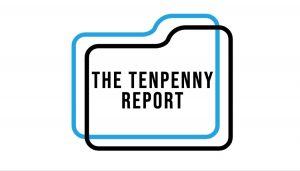I live in the greater Houston metroplex, an expansive area that covers 10,000 square miles. Back in 2017, Hurricane Harvey was bearing down on all of us. I was sandbagging my house to prepare for the eventual 51 inches of rain we got, and wasn’t paying attention to much else. While preparing for the worst, I wasn’t paying attention to the fact that many people at the University of Texas Medical Branch (UTMB) in Galveston were sweating bullets – bigtime.
Why? Despite the fact that it was built to withstand a category 5 hurricane, the Galveston powers-that-be were worried about a particular laboratory. Harvey was going to be gargantuan, and the Galveston National Laboratory (GNL) was on the front line of the storm. You see, the GNL isn’t just any old laboratory. It is a high security national biocontainment laboratory – a level 4 facility, one of 15 in the United States. In fact, the GNL is the largest level 4 lab in the world located on an academic campus.
Who built it?
The NIH and the US Congress built it. After September 11, 2001, the Bioterrorism Act was put into place, and that event led the federal government to push for the creation of such facilities to purportedly protect us Americans from further bioterrorism attacks. Naturally, the NIH’s National Institute of Allergy and Infectious Diseases (NIAID) led the panel to find suitable locations. And we all know who was (and still is, until the end of 2022) head of NIAID at the time – yes, you guessed it, Anthony Fauci.
In the 2003 to 2005 timeframe, NIAID chose two sites for National Biocontainment Laboratories (NBLs): Galveston and Boston. Galveston is a massive 80,000 s.f. facility, with 12,000 s.f. dedicated to level 4 use. And if “Boston biolab” rings a bell for you, that is because Boston is the site of the National Emerging Infectious Diseases Laboratories (NEIDL), the sister to the Galveston lab. NEIDL is a facility of Boston University and located very close to Boston Medical Center.
NEIDL was in the news in October 2022 because researchers there developed a new COVID strain with an 80% kill rate by creating a variant combining the omicron with the original Wuhan viral strain. The scientists extracted the omicron spike protein and attached it with the original strain, calling it Omicron S-carrying virus. The university went to great lengths to say that their created strain was much less dangerous than the original Wuhan strain, and that of course it didn’t involve any gain of function research.
Why was GNL built?
Both the Galveston and Boston labs were built for the usual reason of “guarding the American public against future pandemics”, basic research of dangerous pathogens, and of course, the development of new vaccines.
Nothing answers the “why” question better than GNL’s own website.
“The National Institute of Allergy and Infectious Diseases (NIAID) provides funding for the operations at the GNL, and the lab’s top priority is research to develop diagnostics, therapeutics and vaccines to combat emerging and re-emerging diseases that threaten public health, not only in our country, but around the world.” NIAID does have funding help, courtesy of the US Department of Defense, the CDC, and other federal agencies. They also have academic partners and funding from both private foundations and big pharma. Of course they do.
What do they work on?
What specifically do GNL researchers work on? The researchers are nationally known for expertise in four main areas: Ebola. Marburg. MERS and Covid-19.
But these four are not the only focus of GNL researchers. They also look at pathogens AND the disease vectors themselves, like mosquitoes and ticks that carry diseases that are “of grave concern to the NIH” – things like malaria, west Nile virus, Zika and more. But never fear, GNL is developing countermeasures for all these disease threats; they’re called ‘select agents’ and are a high priority to be studied by GNL for several reasons, including their “potential to be used as weapons around the world.”
The Galveston National Laboratory is home to research that is funded by NIAID, the U.S. Department of Defense, the U.S. Centers for Disease Control & Prevention and other federal agencies, as well as academic partners, private foundations, and the biopharmaceutical industry.
Emerging threats
It is more than interesting that GAVI (Global Alliance for Vaccines and Immunizations), a Bill Gates’ funded entity, has published articles on all of these “emerging threat” diseases. The site reminds all of us about the deadly 2014-2015 Ebola outbreak in Africa, and also reminds us that there is a current outbreak in Uganda. GAVI lets us know that the speed of global response is of the utmost essence should the Ebola virus penetrate the Ugandan borders.
GAVI calls Marburg the deadly cousin of ebola, and lets everyone know that it kills nine out of 10 people it infects. They specifically name both international travel and globalization as powerful sources of potential outbreaks. A big pharma whistleblower named Kieran Morrisey let everyone know that a company had developed a PCR test in 2018 for Marburg, an obscure disease that has only killed 16 people worldwide in the last two decades. Why would we need a test? And why would we need a vaccine? Yet the vaccine called RiVax was being created for just this purpose, by a company called Soligenix, with NIAID funding the research. Subsequently GAVI posts an article in April 2021, right in the middle of COVID, declaring that the next pandemic will likely be Marburg!
So what?
So what does GAVI have to do with the GNL? Maybe nothing. Maybe everything. Time will tell. The main point is that prior to COVID, how many of us knew much about GAVI or GNL? I really didn’t, and I live here.
When Harvey hit in 2017, the community had major concerns. After the storm, no one could reach the GNL to determine damage that ensued. Earlier in 2013, the lab actually lost a vial of the Guanarito virus, a deadly Venezuelan virus, similar to ebola. But good news – the CDC and the FBI were called in to investigate. I couldn’t find any conclusive articles about whether the vial was actually found. Instead, the CDC determined that the scientist working on the virus probably accidentally threw the vial away – you know, an accident in a lab with the strictest security measures on the planet. Th CDC experts determined that this was never a public health risk, so we should all be comfortable that we are in good hands. (Note: did anyone look in Ukraine?)
More recently, in 2020, the GNL was under pressure to discuss their work with the Wuhan Institute of Virology. During 2014-2019, the GNL had 34 contracts with Chinese entities – several universities and Huawei Technologies. Did University of Texas report everything they were engaged in with China? Authorities wanted to know.
For example, a 2018 agreement was an exchange program where America’s top national security scientists did research that they shared with the institute in Wuhan. The GNL even bragged about its work in Wuhan, saying they actually directed the Wuhan operations and then boasted about the short- and long-term personnel exchanges between the two institutes.
The US government investigation launched in 2020 specifically focused on GNL’s relationship with Chinese virologist Shi Zhengli, the famous “Batwoman” researcher from the Wuhan Institute. The official GNL statement said that the lab had absolutely complied with all required reporting about all relationships. GNL authorities went on to say that they belonged to NIAID and in fact had relationships with over 70 countries, not just China.
The concern about contracts with China – GNL or otherwise – is regarding ties to China’s Thousand Talents Plan to recruit leading scientists to China. Signed contracts mandate that participating scientists must keep the contract a secret, sign over any intellectual property to the sponsoring Chinese institution, and abide by Chinese law. The concern is this: all of these stipulations are incentives for scientists to set up “shadow labs” in China to copy US taxpayer-funded research.
At the end of 2019, the FBI was investigating 180 such cases at more than 70 US institutions, and GNL was one of them.
A sudden resignation
Fast forward to August 2022 when the president of the University of Texas Medical Branch, Dr. Ben Raimer, abruptly resigned much to the shock of his colleagues. Raimer had been at UTMB for 40 years. Two weeks earlier, Raimer was put on administrative leave for undisclosed reasons, but UTMB was quick to point out that his departure was in no way connected to GNL. The UT System has resisted inquiries from press for more information, and responded to an open records request that all documents have exceptions to disclosure, as reported by the Galveston Daily News, Texas’ oldest newspaper.
Months earlier, Robert Thomas, UTMB vice president for strategic initiatives, resigned. He is married to Amy Shaw Thomas, the senior vice chancellor for health affairs in the UT System. Galveston islanders can’t prove but suspect that the two resignations are related.
Raimer has said that his dismissal was a witch hunt gone rogue. He said he knows there was an anonymous complaint about him and that he had been forced out, but he is innocent: “I broke no laws of the federal government, of God, of mankind or anyone else.”
What I’ve learned
What have I learned? There is a nefarious biolab in my back yard. We all need to pay more attention to these seemingly unrelated news stories that come out. Thank goodness some of the information is out in the open, and hopefully the full story will soon be known.
++++++++++++++++++++++++++++++++
 Like what you’re reading on The Tenpenny Report? Share this article with your friends. Help us grow.
Like what you’re reading on The Tenpenny Report? Share this article with your friends. Help us grow.
Join our list here
++++++++++++++++++++++++++++++++
Fed Up Texas Chick is a contributing writer for The Tenpenny Report. She’s a rocket scientist turned writer, having worked in the space program for many years. She is a seasoned medical writer and researcher who is fighting for medical freedom for all of us through her work.

